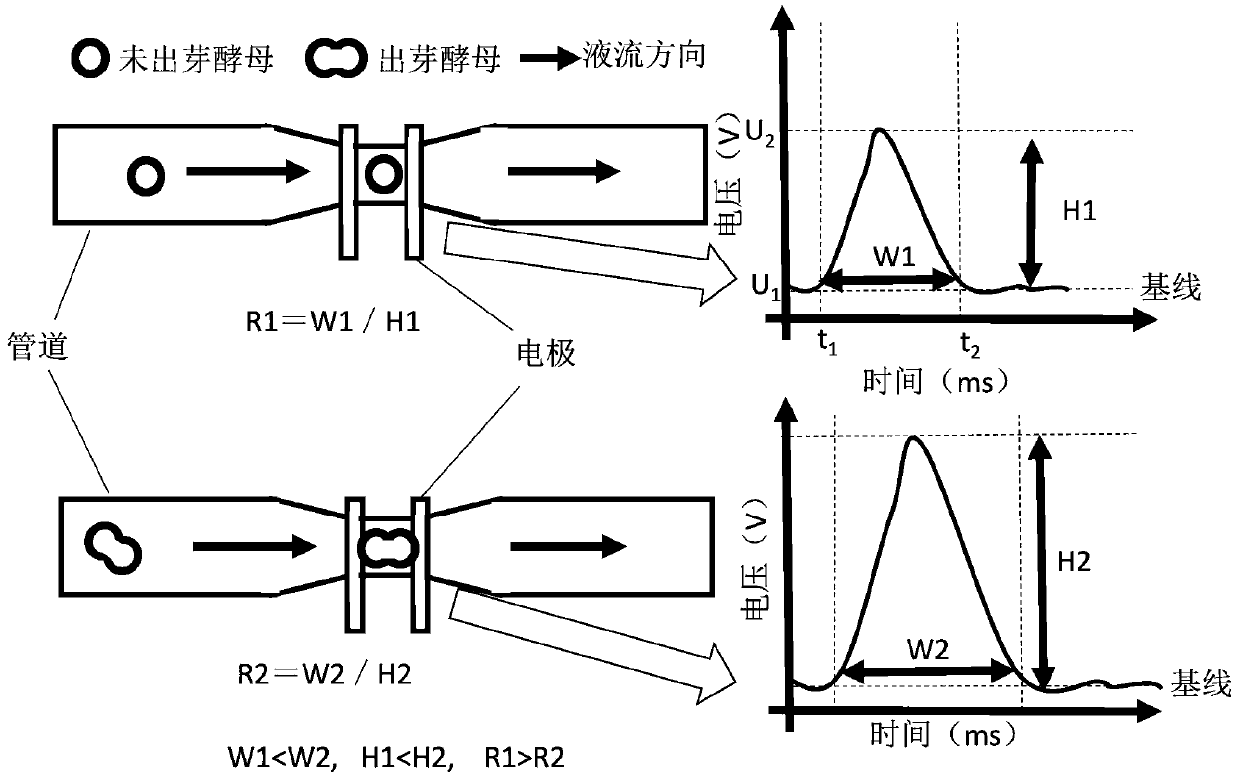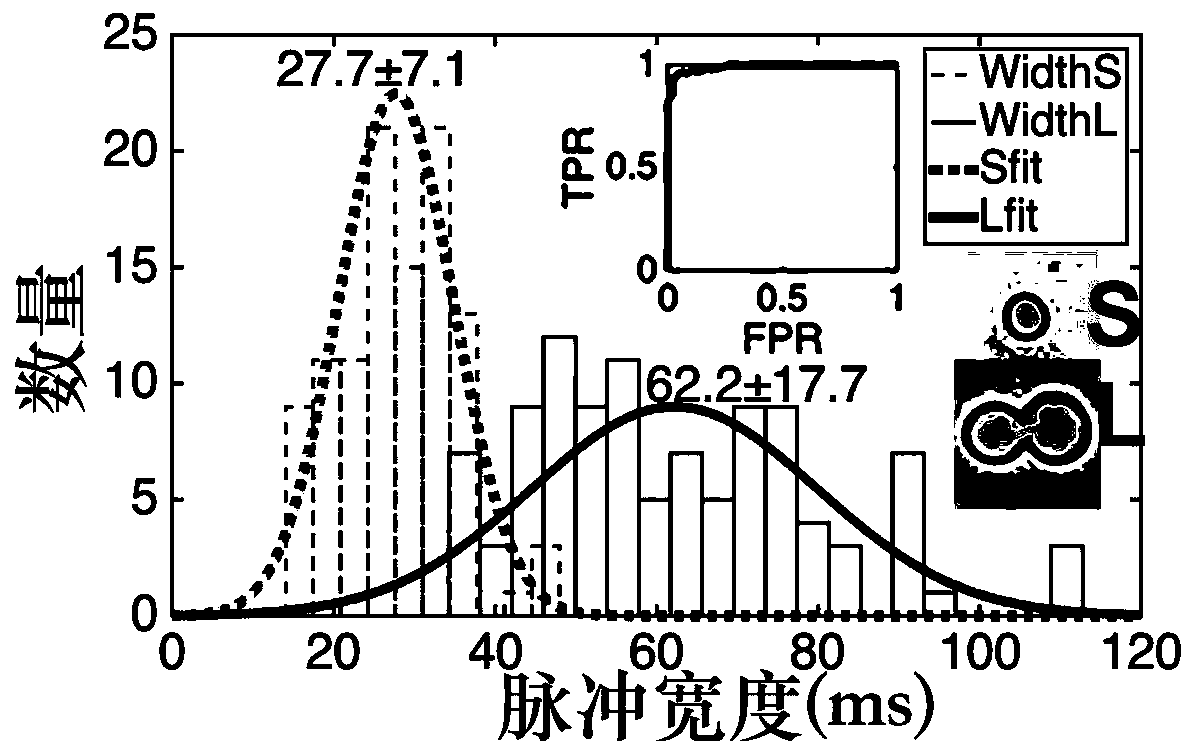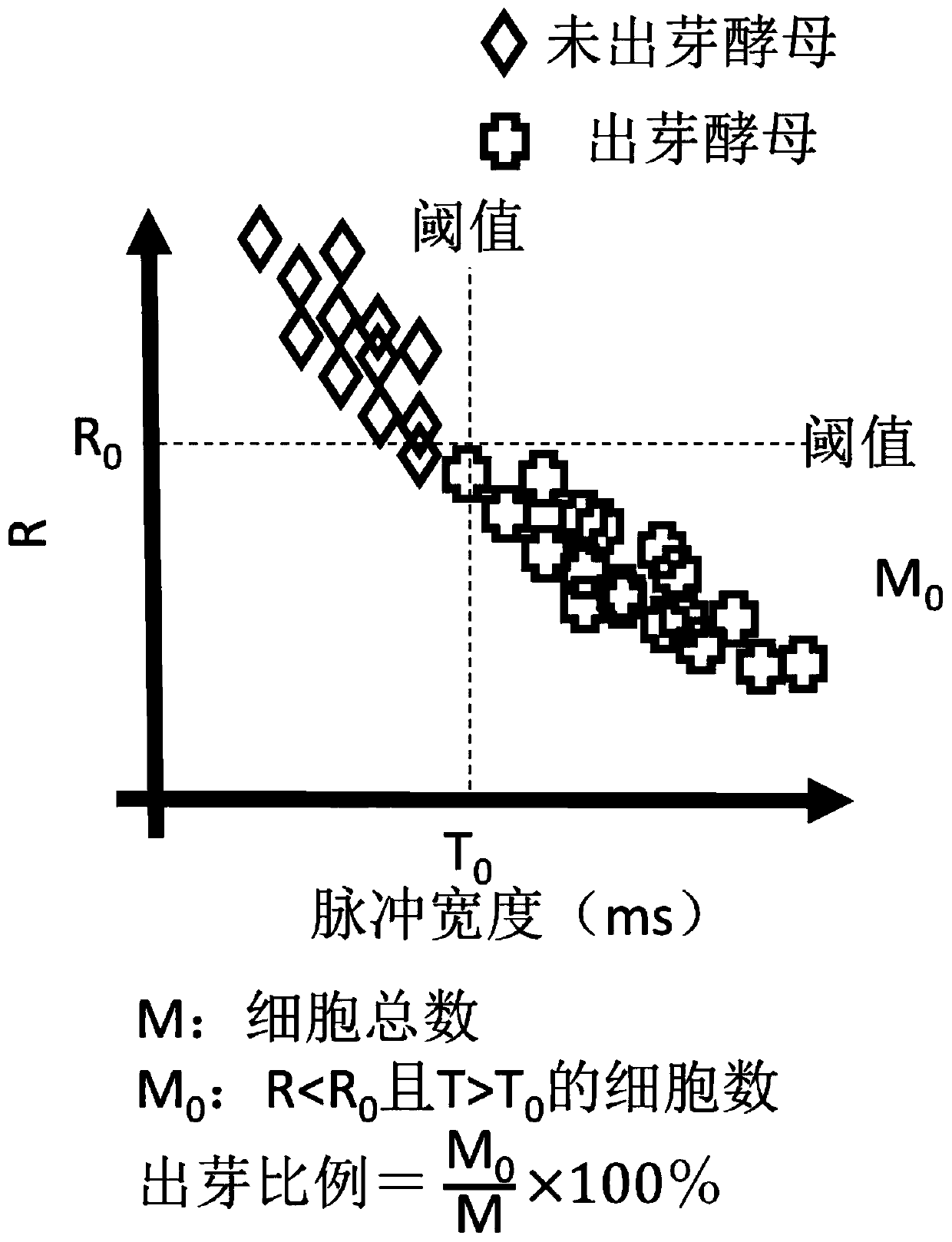Method for detecting yeast morphology and sprouting ratio based on electrical impedance anti-flow type
A technology of flow detection and electrical impedance, which is applied in the direction of biochemical equipment and methods, bioreactor/fermenter combination, specific-purpose bioreactor/fermenter, etc., which can solve the complex and cumbersome analysis method without further analysis of yeast Problems such as the detection of budding ratio, etc., achieve the effect of high throughput, fast calculation of budding ratio, and simple method
- Summary
- Abstract
- Description
- Claims
- Application Information
AI Technical Summary
Problems solved by technology
Method used
Image
Examples
Embodiment 1
[0026] Example 1: Using the pulse width histogram to identify yeast buds and calculate the percentage of buds
[0027] Follow the steps below to implement:
[0028] Step 101, cultivating yeast. Inoculate the yeast into the YPD medium under sterile conditions, and culture at 30°C for 24 hours to recover the strains. Under sterile conditions, take 100 μL of the resuscitated strain culture solution and add it into 100 mL of YPD liquid medium, and cultivate at 30°C and 180 r / min for 6-24 hours.
[0029] Step 102, take a small amount of yeast samples, dilute the cultured yeast cell liquid with phosphate buffered saline (PBS), so that the concentration of yeast cells is 10 5 / mL or so;
[0030] Step 103, collecting the impedance signal of the yeast by using an electrical impedance flow cytometry system. The system is required to allow the rod-shaped particles to pass through the detection part one by one with the long axis parallel to the flow direction of the liquid in the cent...
Embodiment 2
[0051] Embodiment 2: use the pulse height, R value scatter plot to identify yeast buds and calculate the bud ratio according to the following steps:
[0052] Steps 101-104 are the same as in Embodiment 1.
[0053] Step 105, determination of budding yeast identification threshold. Skip this step if thresholds have already been determined.
[0054] Specifically include the following steps:
[0055] a, according to the aforementioned steps 101-104, collect the pulse height and R value of 100 typical budding live yeast cells for statistics;
[0056] b, the pulse height and R value of 100 typical ungerminated single live yeast cells were also collected for statistics;
[0057] c, Comparing the numerical distribution of the scatter plots of the pulse statistics results of typical budding yeast and typical unbudding live yeast cells, and determining the parameter boundary threshold of budding yeast and non-budding yeast. All the collected 200 yeast signals can be arranged in asce...
Embodiment 3
[0060] Embodiment 3: Using the measured budding ratio to guide the cultivation of yeast
[0061] The budding ratio detected can be used to guide the cultivation of yeast and fermentation industry. As shown in the following experimental results, the budding ratio of yeast at different culture stages has different values, which reflects the proliferation ability and vitality of yeast, and also indicates whether the culture environment it lives in is suitable for rapid reproduction.
[0062] Step 1, cultivating yeast. Inoculate the yeast into the YPD medium under sterile conditions, and culture at 30°C for 24 hours to recover the strains. Under sterile conditions, take 100 μL of the resuscitated strain culture solution and add it into 100 mL of YPD liquid medium, and culture it at 30 °C and 180 r / min for 48 h.
[0063] Step 2. Starting from injecting the resuscitated bacteria liquid into the medium, select 0, 6, 12, 18, 24, 30, and 48 hours as the detection time points, and det...
PUM
 Login to view more
Login to view more Abstract
Description
Claims
Application Information
 Login to view more
Login to view more - R&D Engineer
- R&D Manager
- IP Professional
- Industry Leading Data Capabilities
- Powerful AI technology
- Patent DNA Extraction
Browse by: Latest US Patents, China's latest patents, Technical Efficacy Thesaurus, Application Domain, Technology Topic.
© 2024 PatSnap. All rights reserved.Legal|Privacy policy|Modern Slavery Act Transparency Statement|Sitemap



